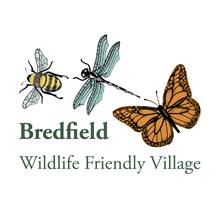I remember as a child, and perhaps you remember too, holding a buttercup under another child’s chin and asking “do you like butter?” If a yellow glow appeared there, they did like butter. I recall that on sunny days everyone liked butter! Buttercup’s yellow petals have a waxy, reflective surface, designed not for children’s games, but to attract pollinating insects. A passing bee couldn’t miss that attractive yellow glow, which signals one thing: nectar.
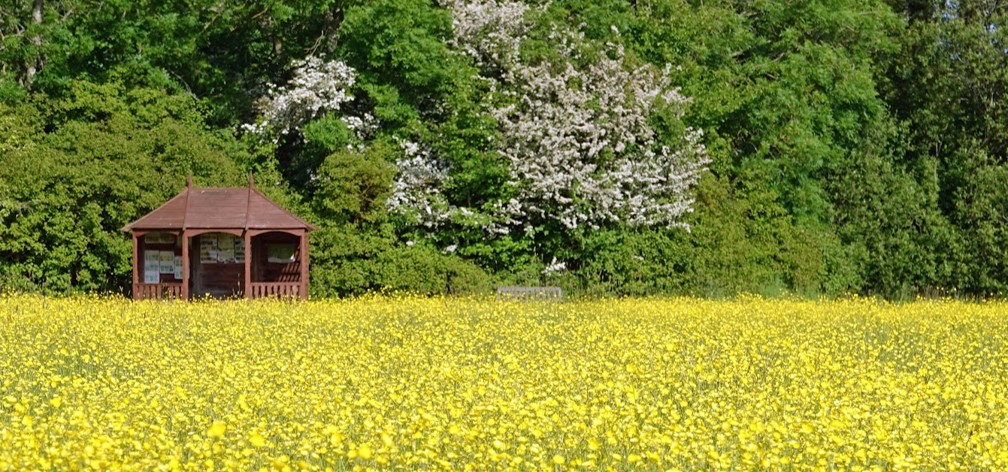
A sea of Meadow Buttercups at Bredfield Meadow and Orchard
Buttercups aren’t fussy which insects aid their pollination: bees, flies or beetles. They have three strategies to attract insects. Firstly, all buttercups swing their aspect during the day to face the sun (they are ‘heliotropic’). As the sun heats up the plant, the buttercup emits a scent that is attractive to insects. Secondly, the brightness of the petals makes the plant impossible to miss and the glossy, reflective surface resembles liquid nectar. Thirdly, the petal cup of the buttercup is shallow, allowing insects easy access to the nectar, which is particularly important for shorter-tongued bees, such as Mining Bees (Andrena). On their way to and from the accessible pool of nectar in the shallow cup of the buttercup, insects pass the pollen-ladened male anthers and the pollen adheres to them. Subsequently, it is deposited on the female stigma of the next-visited buttercup.
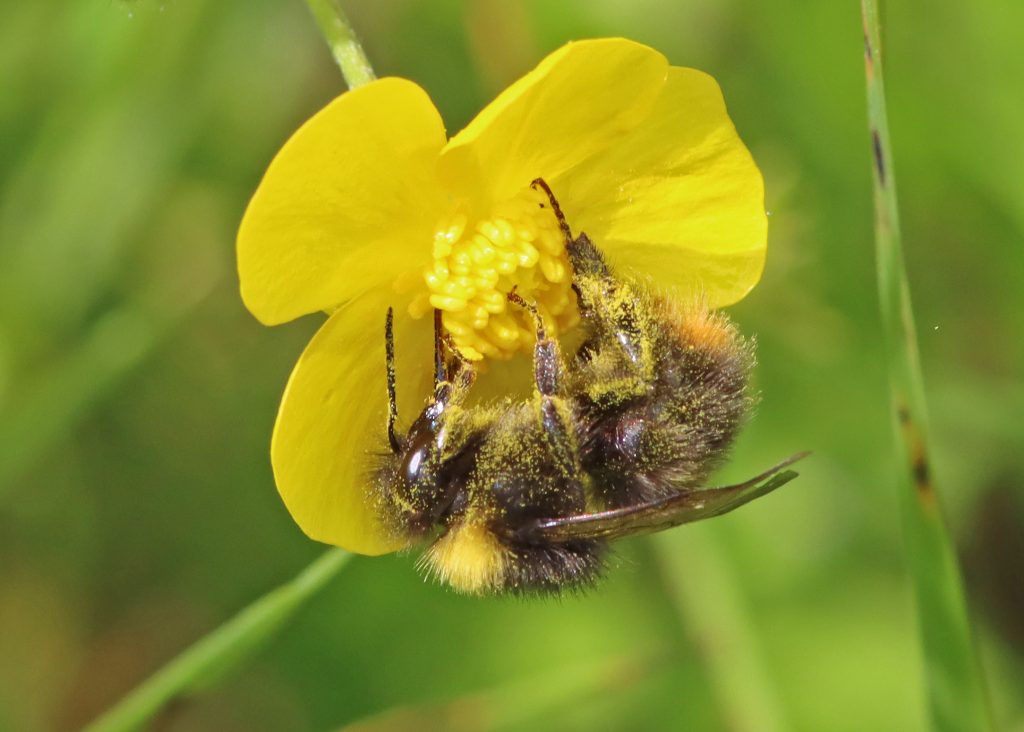
Early Bumblebee on Meadow Buttercup
If you go down to Bredfield Jubilee Meadow and Orchard in Spring you will see a carpet of yellow Meadow Buttercups, and you will hear the buzz of bees, busy at their work. Meadow Buttercups are just one of several species of buttercup to be found in Britain. Let’s have a more detailed look at four of them:
Meadow Buttercup (Ranunculus acris). As the names suggests, this will usually be the predominant species in meadows and grassland. It grows taller than the other species, allowing it to compete with meadow grasses. It has dark-green, triangular palmated leaves with 3-5 deeply cut lobes.
Creeping Buttercup (Ranunculus sepens). Grows lower to ground and has triangular leaves with 3 deeply cut lobes. It is likely to be found in damp places in woodland roadsides or gardens. In addition to reproducing sexually, it can reproduce asexually: sending out runners (‘stolons’), which spread from the parent plant and produce daughter plants from nodes along the runner.
Bulbous Buttercup (Ranunculus bulbosus). Also has leaves with 3 lobes, but the middle lobe has a clear stalk. The sepals are turned downwards, and the flower stalk is grooved. The name derives from the swollen base of the stem. It is not as common as the above two species.
Goldilocks Buttercup (Ranunculus auricomus). A short, slightly hairy plant. The upper stem leaves are deeply lobed with 3 to 5 narrow segments. Petals are frequently imperfect and quite often absent. This species has only recently been discovered in Bredfield Meadow and Orchard.
Along with spearworts and water crowfoots, buttercups belong to the genus Ranunculus. If you’re interested in lepidoptera, you may know that there are two attractive moths called ‘Ranunculus’: Feathered Ranunculus and Large Ranunculus. Moths are often named after their particular food plant, and the larvae of these Ranunculus moths feed, amongst other things, on buttercup leaves. Buttercups have an important ecological role for a range of insects.
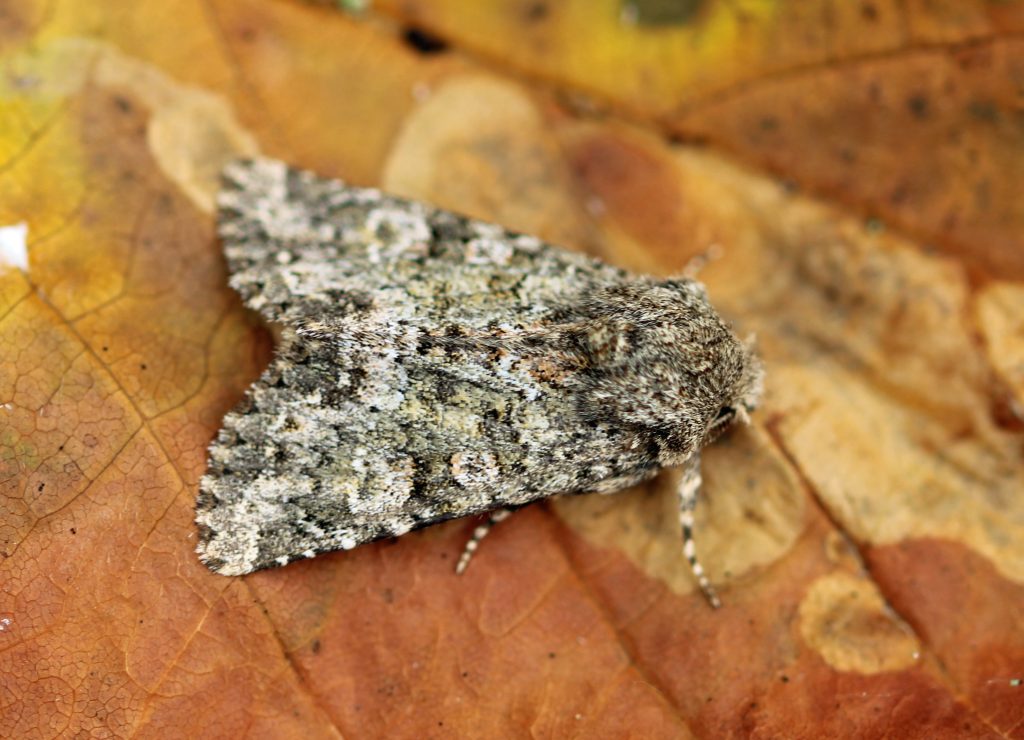
Feathered Ranunculus moth
Like many other common plants, buttercups have been the stuff of legend, myth and folklore. One of the oddest folk tales is that cows that grazed on buttercups produced the sweetest milk and the best butter (perhaps the origin of the name ‘buttercup’). Of course, this cannot be true, because the plants are avoided by livestock due their foul taste and toxicity. In an ancient legend, a group of fairies asked an old miser to share his gold with them. When he refused, the fairies cut a hole in his sack with a blade of grass. Not noticing this, the miser walked away, sprinkling his coins across the field as he went. Each one that fell sprouted into a buttercup. In America, buttercups used to be referred to as ‘Coyote eyes’, from the legend of a Coyote who had his eyes stolen by an Eagle, and made new eyes from buttercups. In the Middle Ages, buttercups were used as a treatment for lunatics.
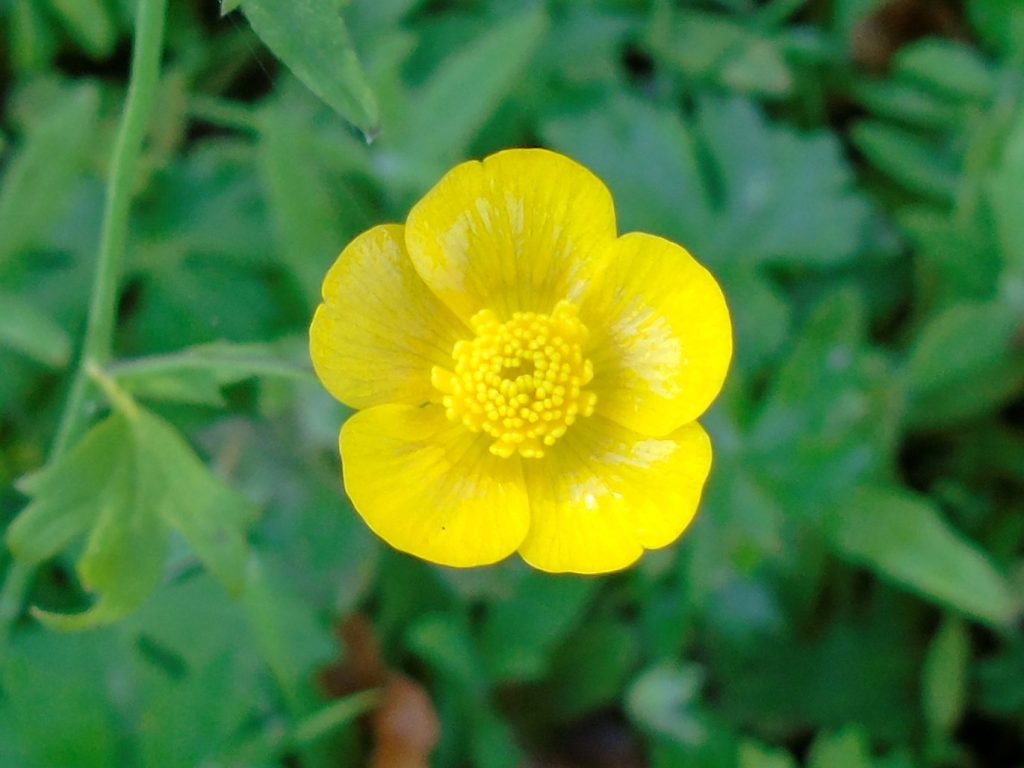
Meadow Buttrcup showing petals and anthers
Don’t forget to venture down to Bredfield Meadow and Orchard to experience a vast display of these wonderful flowers.
All photographs taken in Bredfield by the author.
